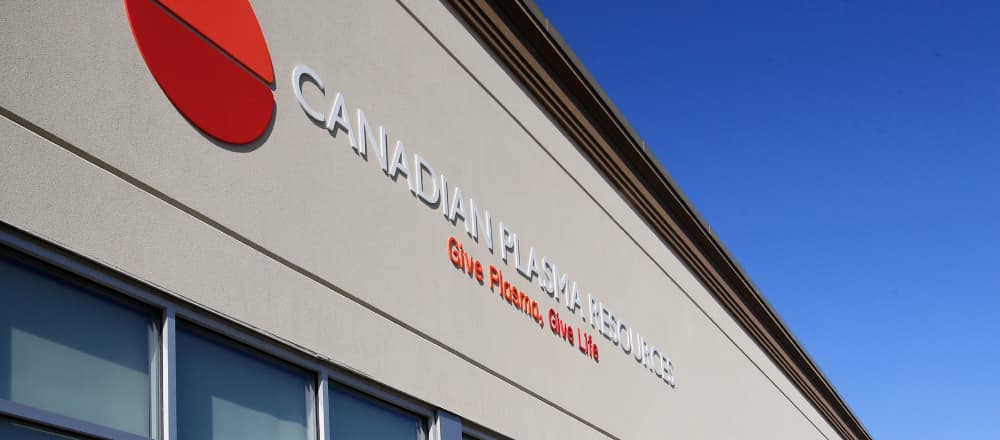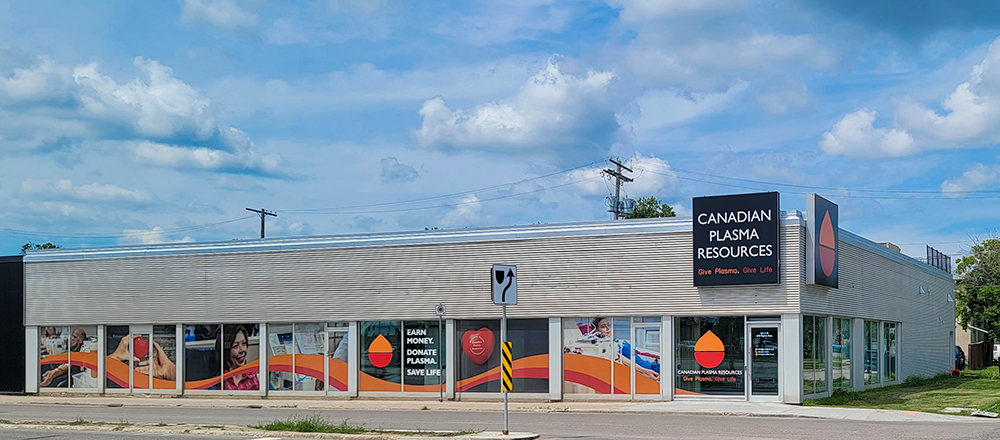The Plasma Donation Process: From Start to Finish
April 1, 2023
The plasma donation process is smooth, effective and streamlined for your comfort and ease.
First time plasma donors should set aside 2 ½ to 3 hours for their first plasma donation appointment. This is to make time for the health and screening checks that will take place prior to your plasma donation appointment – but the donation process starts before you come through our centre doors.
The Requirements for Plasma Donation
In order to donate plasma, you have to meet a set of eligibility requirements. In order to donate plasma, you have to:
- Be between 17 and 68 years of age.
- Weigh between 50-180 kg.
- Have not had a tattoo or piercing done in the past six months.
- Have not donated blood in the past 56 days.
You also have to have a permanent address within 100 km of one of our facilities and present valid proof of identification.
How to Prep for Your Appointment
Prior to donating plasma, it’s important that you’re healthy and hydrated. Your health is a priority to ensure that your plasma won’t be rejected, as well as supporting your post-donation recovery.
Stay Hydrated
Plasma is 92% water, so it’s important that you make sure that you’re properly hydrated prior to your plasma donation appointment. Drinking a proper amount of water ensures that your veins are full and ready for donation. It also impacts how your plasma separates during the plasmapheresis process.
A low volume of plasma collected can be caused by dehydration. Drinking too much caffeine or smoking prior to your appointment can lead to dehydration, so it’s important to:
- Drink 6-8 cups of water on the day of your donation.
- Not consume caffeinated beverages at least 6 hours prior to donating.
- Refrain from smoking for at least 8 hours prior to your appointment.
Avoid Eating Fatty Foods
Your plasma can be rejected for being lipemic. Lipemic plasma occurs when there is a high concentration of fats in the blood, and it causes plasma to turn milky white and cloudy. This high concentration of fats in the blood makes plasma unsafe to use in plasma-derived medicines and medical treatments.
Keep Your Protein Levels Up
A part of the plasma screening process includes measuring your protein levels. It’s important to keep your protein levels up for your plasma donation because plasma contains essential proteins, like antibodies and coagulation proteins.
There are a few easy ways that you can boost your protein intake prior to your plasma donation appointment.
- Eat red meat. Protein-rich meat like steak is a great way to get your protein in before you donate plasma!
- Have eggs and dairy. Three large eggs contain 19 grams of protein, making them an easy option for a protein-rich pre appointment breakfast!
- Incorporate plant-based protein. Tofu, dark leafy greens and edamame are all examples of plant-based protein sources that you can easily throw into a salad or quick snack before your appointment!
The Plasma Donation Process
The plasma donation process is broken up into three separate categories that are necessary to safely collect your plasma and to prep you for the donation process.
Registration
The first step of your plasma donation appointment is registering. The registration process takes approximately 45 minutes for first time donors. Registration involves:
- Presenting valid identification
- Completing a questionnaire
- Reviewing educational material
- Reviewing a consent form
- Undergoing preliminary health checks, such as blood pressure and temperature
Screening
The screening portion of the plasma donation process is in place to make sure that you are healthy and capable of donating usable plasma. During the screening process, you will:
- Undergo a physical examination
- Review your registration information with a registered professional
- Participate in an interview and a question and answer session
- Confirm consent
Plasmapheresis
Plasma is collected through a process known as plasmapheresis. During plasmapheresis, you are intravenously connected to an apheresis machine. An apheresis machine separates plasma from whole blood and returns your blood back to your body. It takes 50 minutes for an adequate amount of plasma to be separated and collected through plasmapheresis.
Post Donation Tips
After the plasmapheresis process, you’re encouraged to take 10 minutes to rest, replenish your body with a snack and hydrate with fluids. We have a variety of snacks and drinks behind our reception desk that you are welcome to grab if you don’t pack a snack! You can also schedule your next plasma donation appointment during this time.
How Your Plasma Donation Helps Others
Patients who rely on plasma therapies need donors like you in order to access the treatments they need. In some cases, about 1,000 donations are needed each year to create enough therapies for one patient – meaning that it’s essential as a donor to donate on a regular basis! This also benefits you, as you can earn up to $595 as a new donor in your first month! Book your plasma donation appointment today.









